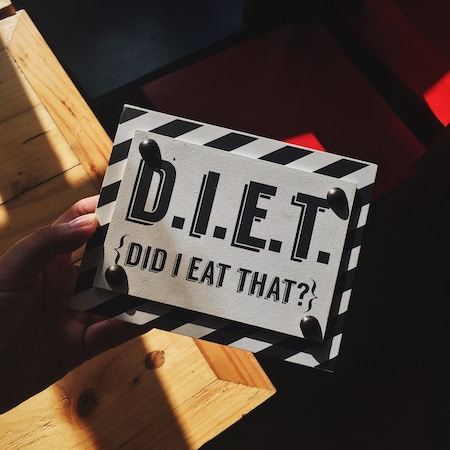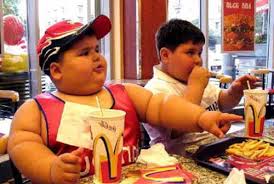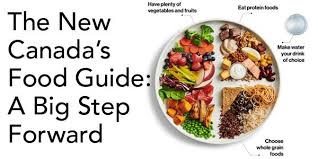Unit One- Personal Choices
3. Lesson Three: Eating Habits
- How rest, exercise, diet, and drugs can affect your physical well-being
- That maintaining a healthy and balanced diet will increase your physical well-being
- Some strategies for changing unhealthy behaviours
When somebody has a healthy "diet", it means that they eat a variety of healthy foods. But in this culture when people speak about someone "dieting", it means that a person is restricting or modifying their food intake in order to lose weight. This lesson discusses issues of both healthy eating and dieting.
During adolescence, appropriate nutrition and healthy eating habits are very important because of the rapid physical growth and development that young people experience. Lifestyle, busy school schedules, part-time employment, homework, sports, lessons, and volunteer activities fill your time. Often you end up eating away from home in places such as the school cafeterias, fast-food restaurants, and vending machines. At this stage of your life, it is more challenging but important to maintain healthy eating habits. You need the energy and nutrients from a balanced diet to maintain the level of healthy physical activity that your schedule probably demands.
This lesson has information about creating and maintaining healthy eating habits. It also has information about how to choose a good weight-loss program - not all dieting is created equal!
 Why do you want to change your body mass? The
most important question is “Why should I diet?” not “How can I diet?”
Understand the health bodies come in many shapes and sizes.
Why do you want to change your body mass? The
most important question is “Why should I diet?” not “How can I diet?”
Understand the health bodies come in many shapes and sizes.
The word diet really refers to the collection of foods a person eats but it is a word that has come to mean a special selection of food for some purpose. Most often a person refers to “being on a diet” when attempting to change body size or “lose weight."
Many Canadians want to change their body shape. And many Canadians are
overweight. Being overweight is more than an issue of appearance; many
overweight individuals are at higher risk of suffering from heart disease,
diabetes, increased blood pressure, and some forms of cancer and arthritis.
The body uses energy when it is active; it gets energy from food. These two facts form the basis for a change in body shape. Reducing body mass is successful only when the body uses more energy than it takes in. There is then no excess energy to store in the body as fat.
So what do you do if you want to reduce your mass for a healthier body?
Obviously there are two actions you must take - reduce the energy you take in
and use more body energy.
You can select foods that offer lots of nutrients but are low in sugar and fat.
Watch out for “empty foods” which provide the body with lots of energy but
offer little in the way of nutrients. Empty foods include soft drinks, candy,
and many fried snack foods. Substitute nutritious foods for these empty ones.
There are some problems with existing on a low energy diet. First of all, your
body thinks it is starving and the rate at which you use energy, your metabolic
rate, slows down as your body tries to use energy more efficiently. This can be
frustrating for the person who does not want to use energy more efficiently but
rather wants to use up excess energy. Exercise will counteract this a bit
because it raises the metabolic rate during and for a while after the activity.
Equally important is increasing amount of energy you use. If you reduce the
amount of energy you take but do not exercise, your body loses muscle tissue as
well as fat. If you exercise, you will develop a tone muscles. As muscles use
mc energy than fat, simply to maintain themselves, having more muscle w help
your body to burn energy. And you will be more fit.
Any activity will consume energy. Walking, jogging, running, swimming, cycling,
and doing any active sport are just a few examples physical activities which
use energy.
The benefit of combining a go eating strategy with physical exercise is that
your metabolic rate increases when you exercise so you use mc energy. And this
increased metabolic rate lasts for several hours after t activity so the
effects last beyond t time of the actual exercise. And there are lots of other
healthy reasons build regular physical activity in your day.
Dieting has become big business. Diet programs and fitness clubs that sell the
idea of losing weight are making money from your interest changing your shape.
There are weight loss products, plans and pr grams and many of them do n work.
Body wraps, belts, and sweat suits cause only water, not fat loss. Diet drugs
that you can buy a not effective in the long term and cause a rise in blood pressure.
Liquid diets can be extremely dangerous and require close medical supervision.
And the weight lost on a liquid diet is usually regained over time because new
eating habits have not been learned. Also there is nothing special about
cellulite, a word created to de scribe one form of body fat. It cannot be
rubbed away; it does not respond to special treatment.
Are you considering “going on a diet”? The best diet is one that you can live
with all your life. It should stress good eating habits and allow reasonable
food choices and amounts so that you can follow it without feeling hungry or
robbed of food. If you are “going on a diet”, be sure that it is one that is
not damaging to your health. Check the diet out and use it only if it:
• allows a wide variety of foods. Do not choose a plan or program that focuses
on one or a couple of foods (like a grapefruit and egg diet) or suggests that
some foods can dissolve fat (they can’t) or have some magical quality.
• provides enough nutrients from food sources. You need to get nutrients from
food, not supplements, drugs, powders or other non-food items.
• teaches you to eat real foods sensibly. Learning how to eat sensibly lets you
stop dieting and not regain mass. It can lead to lifelong change.
• encourages exercise and physical activity. The other half of losing weight is
in the physical activities you do.
Be aware of the diet trap. When you repeatedly go on and off “diets” you are
likely to suffer the consequences of yo-yo” dieting. This on- again off-again
attempt to control body mass causes your body to lower its metabolic rate and
may make weight loss more difficult each time you try it.
The only really good diet is a lifelong plan for eating well. Short term diets
are not as effective as a lifelong healthy eating style.
The only way to reduce
your body mass is to:
• change your eating behaviors permanently
• use more energy than you consume
• combine sensible eating habits and regular physical activity.

Experts agree the key to healthy eating is the time-tested
advice of balance, variety and moderation. In short, that means eating a wide
variety of foods without getting too many calories or too much of any one
nutrient. These 10 tips can help you follow that advice while still enjoying
the foods you eat. 1. Eat a variety of
nutrient-rich foods. You need more than 40
different nutrients for good health, and no single food supplies them all. Your
daily food selection should include bread and other whole-grain products;
fruits; vegetables; dairy products; and meat, poultry, fish and other protein
foods. How much you should eat depends on your calorie needs. 2. Enjoy
plenty of whole grains, fruits and vegetables. Surveys show most Americans don't eat enough of these foods.
Do you eat 6-11 servings from the bread, rice, cereal and pasta group, 3
of which should be whole grains? Do you eat 2-4 servings of fruit and 3-5
servings of vegetables? If you don't enjoy some of these at first, give
them another chance. Look through cookbooks for tasty ways to prepare
unfamiliar foods. 3. Maintain
a healthy weight. The weight that's right for
you depends on many factors including your sex, height, age and heredity.
Excess body fat increases your chances for high blood pressure, heart
disease, stroke, diabetes, some types of cancer and other illnesses. But
being too thin can increase your risk for osteoporosis, menstrual
irregularities and other health problems. If you're constantly losing and
regaining weight, a registered dietitian can help you develop sensible
eating habits for successful weight management. Regular exercise is also
important to maintaining a healthy weight. 4. Eat
moderate portions. If you keep portion sizes
reasonable, it's easier to eat the foods you want and stay healthy. Did
you know the recommended serving of cooked meat is 3 ounces, similar in
size to a deck of playing cards? A medium piece of fruit is 1 serving and
a cup of pasta equals 2 servings. A pint of ice cream contains 4 servings.
Refer to the Food Guide Pyramid for information on recommended serving
sizes. 5. Eat
regular meals. Skipping meals can lead to
out-of-control hunger, often resulting in overeating. When you're very
hungry, it's also tempting to forget about good nutrition. Snacking
between meals can help curb hunger, but don't eat so much that your snack
becomes an entire meal. 6. Reduce,
don't eliminate certain foods. Most people
eat for pleasure as well as nutrition. If your favorite foods are high in
fat, salt or sugar, the key is moderating how much of these foods you eat
and how often you eat them. 7. Identify major sources of these ingredients in your diet and make changes,
if necessary. Adults who eat high-fat meats or whole-milk dairy products
at every meal are probably eating too much fat. Use the Nutrition Facts
panel on the food label to help balance your choices. 8. Choosing skim or low-fat dairy products and lean cuts of meat such as
flank steak and beef round can reduce fat intake significantly. If you love fried chicken, however, you don't have to give it up. Just eat
it less often. When dining out, share it with a friend, ask for a
take-home bag or a smaller portion. 9. Balance
your food choices over time. Not every food
has to be "perfect." When eating a food high in fat, salt or
sugar, select other foods that are low in these ingredients. If you miss
out on any food group one day, make up for it the next. Your food choices
over several days should fit together into a healthy pattern. 10. Know
your diet pitfalls. To improve your eating
habits, you first have to know what's wrong with them. Write down
everything you eat for three days. Then check your list according to the
rest of these tips. Do you add a lot of butter, creamy sauces or salad
dressings? Rather than eliminating these foods, just cut back your
portions. Are you getting enough fruits and vegetables? If not, you may be
missing out on vital nutrients. Make
changes gradually. Just as there are no
"superfoods" or easy answers to a healthy diet, don't expect to
totally revamp your eating habits overnight. Changing too much, too fast
can get in the way of success. Begin to remedy excesses or deficiencies
with modest changes that can add up to positive, lifelong eating habits.
For instance, if you don't like the taste of skim milk, try low-fat.
Eventually you may find you like skim, too. Remember,
foods are not good or bad. Select foods based
on your total eating patterns, not whether any individual food is
"good" or "bad." Don't feel guilty if you love foods
such as apple pie, potato chips, candy bars or ice cream. Eat them in
moderation, and choose other foods to provide the balance and variety that
are vital to good health.
With so much information available about the effects of dietary fat on health, understanding the role fat plays in a well-balanced diet can be pretty confusing. To cut through the confusion, it's important to remember that fat is an essential nutrient that everyone needs to stay healthy.
Fat is a valuable energy source and carries fat-soluble vitamins needed for proper growth and development. It also contributes important taste and textural qualities that are part of enjoying food.
Too much fat, however, can increase the risk of heart disease, obesity and other health problems. When moderating fat intake, it's important to consider these points:
- Health authorities recommend Canadians consume 30 percent or less of their total daily calories from fat, with 10 percent or less of those calories from saturated fat. Remember, the 30 percent refers to your total fat intake over time, not single foods or meals. Use the following chart to guide your fat intake.
- If you eat
this Total fat Total saturated
number of calories per day fat per day
per day: (grams) (grams)
1,600 53 or less 18 or less
2,000 65 or less 20 or less
2,200 73 or less 24 or less
2,500 80 or less 25 or less - Use the Nutrition Facts panel on the food label to help determine how much fat is in foods. Remember, it's the total fat intake over time that's important. A food high in fat can be part of a healthy diet as long as it's balanced with other lower-fat food choices.
- All fats are a combination of saturated, polyunsaturated and monounsaturated fatty acids. Each of these types of fats have different effects on the body, but all contain nine calories per gram.
- Blood cholesterol levels are influenced by family history, weight, age, smoking, physical activity and eating habits. Studies have shown that diets which are too high in certain saturated fatty acids and dietary cholesterol can raise blood cholesterol.
The Food Guide is a practical tool to help you make food choices that are consistent with the Dietary Guidelines for Americans. Using the Food Guide enables you to eat a variety of foods daily so that you can get the nutrients you need.
The following amounts count as a serving.
- Food Group--Serving Size
- Bread--1 slice bread, 1\2 bagel or English muffin, 1 ounce ready-to-eat cereal, 1\2 cup cooked cereal, rice or pasta, or 5-6 small crackers
- Vegetable--1 cup raw, leafy vegetables, 1\2 cup cooked or chopped raw vegetables or 3\4 cup vegetable juice
- Fruit--1 medium piece of fruit, 1\2 cup mixed fruit or 3\4 cup fruit juice
- Milk--1 cup milk or yogurt, 11\2 ounces natural cheese or 2 ounces process cheese
- Meat--2 - 3 ounces cooked lean meat, poultry or fish (about the size of a deck of cards)
